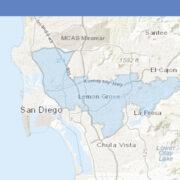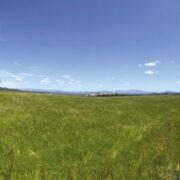Gov. Brown issues executive order combating water waste
THE balmy, arid weather in California has officially become so dry that Governor Jerry Brown made a decision Wednesday to make the first-ever state water cuts.
In a sweeping executive order, Brown called for unprecedented mandatory water cuts across the Golden State, following the latest mountain snowpack measurements—which have shrunk to a record-low 5 percent, or an average 1.4 inches; significantly lower than normal for this time of year.
With nearly 100 percent of the state suffering from a four-year drought, Gov. Brown’s order calls for water use statewide to be slashed by 25 percent (or 1.5 million acre-feet), implemented by the State Water Resources Control Board.
Brown made the announcement on April 1 after accompanying state surveyors into the Sierra Nevada mountains to manually verify the record-low electronic snow water readings.
“Today we are standing on dry grass where there should be five feet of snow,” the governor said. “This historic drought demands unprecedented action.”
Paltry mountain snowpack—the lowest since 1950—means perilously low levels at state reservoirs, which supply 30 percent of California’s May-through-November water to homeowners, farms, wineries, and other utilities.
Details on how the cuts would be implemented were not announced, although the governor said in his order that reductions would fall hardest in water districts that have not adequately followed his voluntary calls for conversation last year.
According to monthly surveys of water use, conservation levels have varied widely around the state. In general, reductions have been lower in Southern California than the rest of the state, especially because of the region’s concentration of larger, estate-sized lots and golf courses.
A spokesman for the state water control board, which has already ordered limits in watering outdoor lawns, said the governor’s action will not mean mandatory rationing for households. In some counties there are fines for actions such as washing off sidewalks and driveways or washing a car with an uncapped hose.
Statewide water districts are expected to follow guidelines from the state—such as the governor’s call for water cuts to school campuses, golf courses, and cemeteries—as they have in other past water crises, where each district is in charge of enacting measures to reduce water usage.
“It’s a different world,” Brown said. “We have to act differently.”
In addition to the mandatory reduction in water use, Gov. Brown called for increased law enforcement against water waste, more investment into advanced conservation technology, and replacement of 50 million square feet of lawn throughout the state—the equivalent of roughly 900 football fields—with drought-tolerant landscaping.
The order also prohibits new homes and developments from irrigating with potable water, unless efficient drip systems are used. The order also bans watering of ornamental grass on public street medians.
“This statewide mandate is a nod to both the severity of the situation and the likelihood of its persistence,” said Dave Feldman, a professor of policy, planning and design at the University of California at Irvine.
“The growing consensus is that this may be the new norm for a few more years, so we’ll have to get used to it,” Feldman added. “And you can’t plan for a drought during a drought.”
(With reports from USA Today, Wall Street Journal)
(www.asianjournal.com)
(OCIE April 3-9, 2015 Sec. A pg.1)




